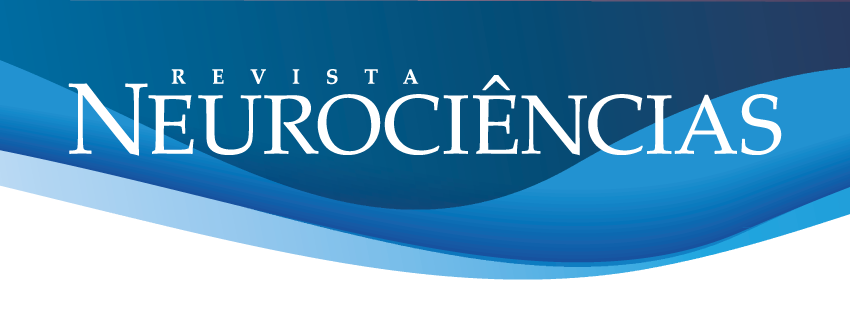Efeitos do CPAP em indivíduos com AVC e condição clínica de apneia obstrutiva do sono
DOI:
https://doi.org/10.34024/rnc.2020.v28.10944Palavras-chave:
Acidente Vascular Cerebral, CPAP, Apneia do Sono, Reabilitação, Doenças CardiovascularesResumo
Introdução. O acidente vascular cerebral (AVC) é atualmente uma das principais causas de mortes e incapacidades no mundo, caracterizado por danos neurológicos que diminuem a qualidade de vida e, em muitos casos, provocam alterações respiratórias durante o sono, ocasionadas pela apneia obstrutiva do sono (AOS), sendo esta considerada um importante fator de risco. Diante disso, o objetivo do presente estudo é analisar a efetividade e os benefícios do uso da pressão positiva contínua nas vias aéreas (CPAP) em indivíduos com AVC que apresentam AOS. Método. Realizou-se uma revisão da literatura nas bases de dados Scielo, Bireme, PEDro, Medline e Pubmed, incluindo artigos publicados nos últimos dez anos, indexados na língua inglesa e portuguesa. Resultados. Os tratamentos com CPAP foram realizados com duração média de 4h/noite, com PEEP de 2 a 12cmH2O, sendo sua titulação realizada por oximetria de pulso, polissonografia ou por meio do AutoCPAP, apresentando redução nos índices de apneia-hipopneia, melhoria das escalas neurológicas e funcionais, com resultados significativos na qualidade do sono, eventos cardiovasculares e recorrências do AVC. Conclusão. O presente estudo sugere que o uso do CPAP em pacientes com AVC que possuem AOS é benéfico, sendo uma técnica eficaz nas comorbidades causadas por este distúrbio.
Downloads
Métricas
Referências
Feigin VL , Forouzanfar MH , Krishnamurthi R , Mensah GA , Connor H , Bennett AD, et al. Global and regional burden of stroke during 1990-2010: findings from the Global Burden of Disease Study 2010. Lancet 2014;383:218. https://doi.org/10.1016/S0140-6736(13)61953-4
Terranova TT, Albieri FO, Almeida MD, Ayres DVM, Cruz SF, Milazzotto MV, et al. Acidente vascular cerebral crônico: reabilitação. Acta Fisiatr 2012;19:50-9. http://doi.org/10.5935/0104-7795.20120011
Dong JY, Zhang YH , Qin LQ. Obstructive sleep apnea and cardiovascular risk: Meta-analysis of prospective cohort studies. Atherosclerosis 2013;229:489-95.
https://doi.org/10.1016/j.atherosclerosis.2013.04.026
Winstein CJ, Stein J, Arena R, Bates B, Cherney LR , Cramer SC, et al. Guidelines for Adult Stroke Rehabilitation and Recovery. Stroke 2016;47:e98-169. https://doi.org/10.1161/STR.0000000000000098
Loke YK Brown JW , Kwok CS , Niruban A , Myint PK. Association of obstructive sleep apnea with risk of serious cardiovascular events: a systematic review and meta-analysis. Circul Cardiovasc Qual Outcomes 2012;5:720-8. https://doi.org/10.1161/CIRCOUTCOMES.111.964783
Javaheri S, Barbe F, Campos-Rodriguez F, Dempsey JA, Khayat R, Javaheri S, et al. Sleep Apnea: Types, Mechanisms, and Clinical Cardiovascular Consequences. J Am Col Cardiol 2017;69:841-58.
https://doi.org/10.1016/j.jacc.2016.11.069
Parra O, Sánchez-Armengol A, Capote F, Bonnin M, Arboix A, Campos-Rodríguez, et al. Efficacy of continuous positive airway pressure treatment on 5-year survival in patients with ischaemic stroke and obstructive sleep apnea: a randomized controlled trial. J Sleep Res 2015;24:47-53. https://doi.org/10.1111/jsr.12181
Menon D, Sukumaran S, Varma R, Radhakrishnan A. Impact of obstructive sleep apnea on neurological recovery after ischemic stroke: A prospective study. Acta Neurol Scand 2017;136:419-26.
https://doi.org/10.1111/ane.12740
Pinto JA, Ribeiro DK, AFS, Duarte C, Freitas GS. Comorbidities Associated with Obstructive Sleep Apnea: a Retrospective Study. Int Arch Otorhinolaryngol 2016;20:145-50. https://doi.org/10.1055/s-0036-1579546
Xu S, Wan Y, Xu M, Ming J, Xing Y, An F, et al. The association between obstructive sleep apnea and metabolic syndrome: a systematic review and meta-analysis. BMC Pulmon Med 2015;105:15.
http://doi.org/10.1186/s12890-015-0102-3
Sharma S, Culebras A. Sleep Apnea and Stroke. Stroke Vasc Neurol 2016;1:185-91. http://doi.org/10.1136/svn-2016-000038
Labarca G, Cruz NR, Descalzi F. Multisystemic involvement in obstructive sleep apnea. Rev Med Chile;142:748-57.
http://doi.org/10.4067/S0034-98872014000600009
Dharmakulaseelan L, Kirolos N, Kamra M, Armesto-Heys A, Bouthillier C, Runions S, et al. Educating Stroke/TIA Patients about Obstructive Sleep Apnea after Stroke: A Randomized Feasibility Study. J Stroke Cerebrovasc Dis 2019;28:104317.
https://doi.org/10.1016/j.jstrokecerebrovasdis.2019.104317
Patel N, Raissi A, Elias S, Kamra M, Kendzerska T, Murray BJ, et al. A Modified Definition for Obstructive Sleep Apnea in Home Sleep Apnea Testing after Stroke or Transient Ischemic Attack. J Stroke Cerebrovasc Dis 2018;27:1524-32.
https://doi.org/10.1016/j.jstrokecerebrovasdis.2017.12.052
Ryan CM, Bayley M, Green R, Murray BJ, Bradley TD. Influence of continuous positive airway pressure on outcomes of rehabilitation in stroke patients with obstructive sleep apnea. Stroke 2011;42:1062-7.
http://doi.org/10.1161/STROKEAHA.110.597468
Ren L, Wang K, Shen H, Xu Y, Wang J, Chen R. Effects of continuous positive airway pressure (CPAP) therapy on neurological and functional rehabilitation in Basal Ganglia Stroke patients with obstructive sleep apnea: A prospective multicenter study. Medicine (Baltimore) 2019;98:e16344. http://doi.org/10.1097/MD.0000000000016344
Kendzerska T, Wilton K, Bahar R, Ryan CM. Short- and long-term continuous positive airway pressure usage in the post-stroke population with obstructive sleep apnea. Sleep Breat 2019;23:1233-44. https://doi.org/10.1007/s11325-019-01811-9
Gupta A, Shukla G, Afsar M, Poornima S, Pandey RM, Goyal V, et al. Role of Positive Airway Pressure Therapy for Obstructive Sleep Apnea in Patients with Stroke: A Randomized Controlled Trial. J Clin Sleep Med 2018;14:511-21. https://doi.org/10.5664/jcsm.7034
Winstein CJ, Stein CJ, Arena VCR, Bates B, Cherney lR, Steven C, et al. Guidelines for Adult Stroke Rehabilitation and Recovery: A Guideline for Healthcare Professionals from the American Heart Association/American Stroke Association. Stroke 2016;47:98-169.
https://doi.org/10.1161/STR.0000000000000098
Kim H, Im S, Park JI, Kim Y, Sohn MK, Jee S. Improvement of Cognitive Function after Continuous Positive Airway Pressure Treatment for Subacute Stroke Patients with Obstructive Sleep Apnea: A Randomized Controlled Trial. Brain Sci 2019;9:252. https://doi.org/10.3390/brainsci9100252
Parra O, Sánchez-Armengol A, Bonnin M, Arboix A, Campos-Rodríguez F, Pérez-Ronchel J, et al. Early treatment of obstructive apnea and stroke outcome: a randomized controlled trial. Eur Respirator J 2011;37:1128-36.
https://doi.org/10.1183/09031936.00034410
Aaronson JA, Hofman WF, Van Bennekon CA, Van Bezeij T, Van Den Aardweg JG, Groet E, et al. Effects of Continuous Positive Airway Pressure on Cognitive and Functional Outcome of Stroke Patients with Obstructive Sleep Apnea: A Randomized Controlled Trial. J Clin Sleep Med 2016;12:533-41. https://doi.org/10.5664/jcsm.5684
Downloads
Publicado
Como Citar
Edição
Seção
Aceito: 2020-10-05
Publicado: 2020-10-19


 Português
Português
 English
English
 Español
Español
